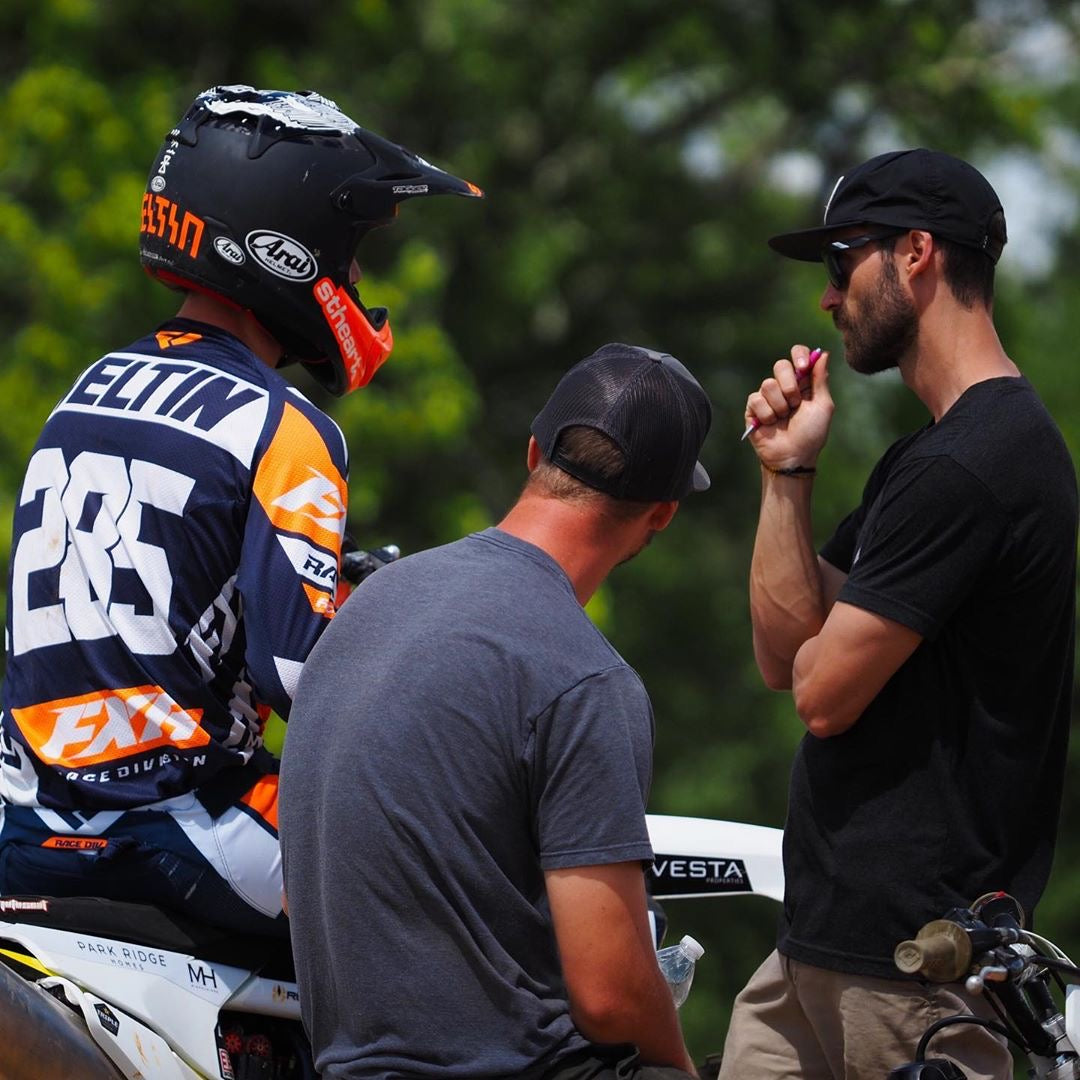When a customer of one of your customer’s calls you to praise your product, well that is a call you want to pick up. One of our early Moto Customers, Mark Johnson from REP Suspension, launched a “Factory for a Day” data service using the Motion Instruments’ Moto Kit. Mark installs the system on the bike and is trackside to interpret the data and provide custom suspension tuning and re-valving if necessary. It truly is a Factory service, but at an attainable price point. Rather than waste 100s of hours guessing, just get to the point and find your tune so you can focus on going fast. Here is Richard’s experience using Mark’s game changing tuning service.
--------------------------------------------------------------------------------------------
So the rear of the bike kicks. Is it not enough rebound damping? Or is it too much high-speed compression not allowing sufficient travel to match the forks? Or are the forks too soft, not matching the springRate/preLoad on the rear? Or are the forks too high in the clamps, creating too much forward bias, causing the rear to overwhelm the front of the bike, feeling like the rear is kicking?
What about that controversial KTM PDS chassis—why do tuners suggest lowering the rear to balance out the bike? Rather than reducing the travel of the rear, why not put longer AER forks on? What about that chassis—did KTM engineer the frames for the weight distribution, gyroscopic forces and engine braking of a four stroke engine and the two strokes were an afterthought due to economies of scale? Because two strokes carry weight lower and don’t have engine braking, would they be better suited to using less sag, less offset and lighter fork compression in order to bias more weight to the front?
These were just a few of the questions bouncing around in my head. And we aren’t even getting into how one setting change affects other settings. I needed help. I needed affirmation. I needed someone to tell me things were going to be okay, things were balanced (or not), fix them for me, and I needed science and math and DATA to give me assurance that the factory sag settings, shock / fork spring ratios and fork length/offsets were optimized. And I didn’t want to spend the next few months being distracted from my rides due to “testing”. Enter REP Suspension and Motion Instruments.
I signed up for the “Factory for a Day” program offered by REP. They use the Motion Instruments suspension data system and rider feedback to triangulate what is going on with your current suspension set up, valve it accordingly, figure out custom clicker settings, and send you on your way, quantitatively and qualitatively, satisfied within a few hours. Mark Johnson and the REP crew met me at Cahuilla Creek at the opening, were attentive, motivated, and gave me the impression that they were only satisfied once I was satisfied. The equipment was set up on my bike and test laps ensued with debriefs following each 10 minute session. Once chassis balance, compression and rebound were optimized via the Motion Instruments data, we worked on personal preferences. For example, I am a tall rider, and my CG tends to be further back than normal. This requires stiffer springs vs standard. Once we deviated from standard, we needed to match the front. I also wanted my two stroke to corner as well as my four stroke from a front wheel feel perspective. We narrowed in on the bike's rear weighting bias and saw things in the data that were different between the four stroke PDS bike and the two stroke PDS bike (all else being equal) and adjusted accordingly.
Motion Instruments data was invaluable in this exercise by providing direction, saving time and compensating for bike and rider variances. As described in my opening paragraph, sometimes certain problems with forks feel like problems with the shock and vice versa, so you adjust something that was already optimized and ultimately over-compensate in one setting and under compensate in another. Second, the set-up process takes me months of riding and experimentation to narrow down the cause of my discontent. I have spent way too much riding time trying this and that to reduce or increase a particular chassis dynamic based on what I think is happening, ultimately misdiagnosing the root cause of the problem. Third, as a rider that falls well out of the 5’9”, 168lbs, target market, I am not standard and my optimum suspension settings aren't standard either. Factor in 2T vs 4T engine characteristic differences, weight distribution differences, and personal preferences, Motion Instruments data guides the rider to a theoretically correct baseline, in a matter of minutes and deviations to that baseline can occur in an informed manner. Lastly, I’ve tried high end suspension (in KTM-land, the cone valve forks and the trax shock). While these certainly improved the ride quality on my bike from my previous set-up, I always questioned if I couldn’t just get to that same level of satisfaction without spending the thousands of dollars on the A-kit set up. What Motion Instruments enabled REP to do to my suspension saved me a ton of time, money, and after riding it recently in my home terrain, allowed me to just focus on enjoying the ride.
--------------------------------------------------------------------------------------------
We don’t claim to know anything about setup. But we know how to quantify a bike with a normalized dataset. At the end of the day, it is user preference that trumps everything. The rider either likes the bike, or not. But data will uncover things you just can’t feel. With a talented suspension technician like Mark Johnson, you now have a very powerful custom service. Blindly spending money on suspension without setup may not give you an ideal setup. We know our systems are not cheap and we do not recommend everyone go out and buy one. But, if you are going to spend the money on suspension anyway, you are better off working with a partner like Mark to help you develop your bike. You’ll get a custom suspension setup and valving that probably can’t be matched.



